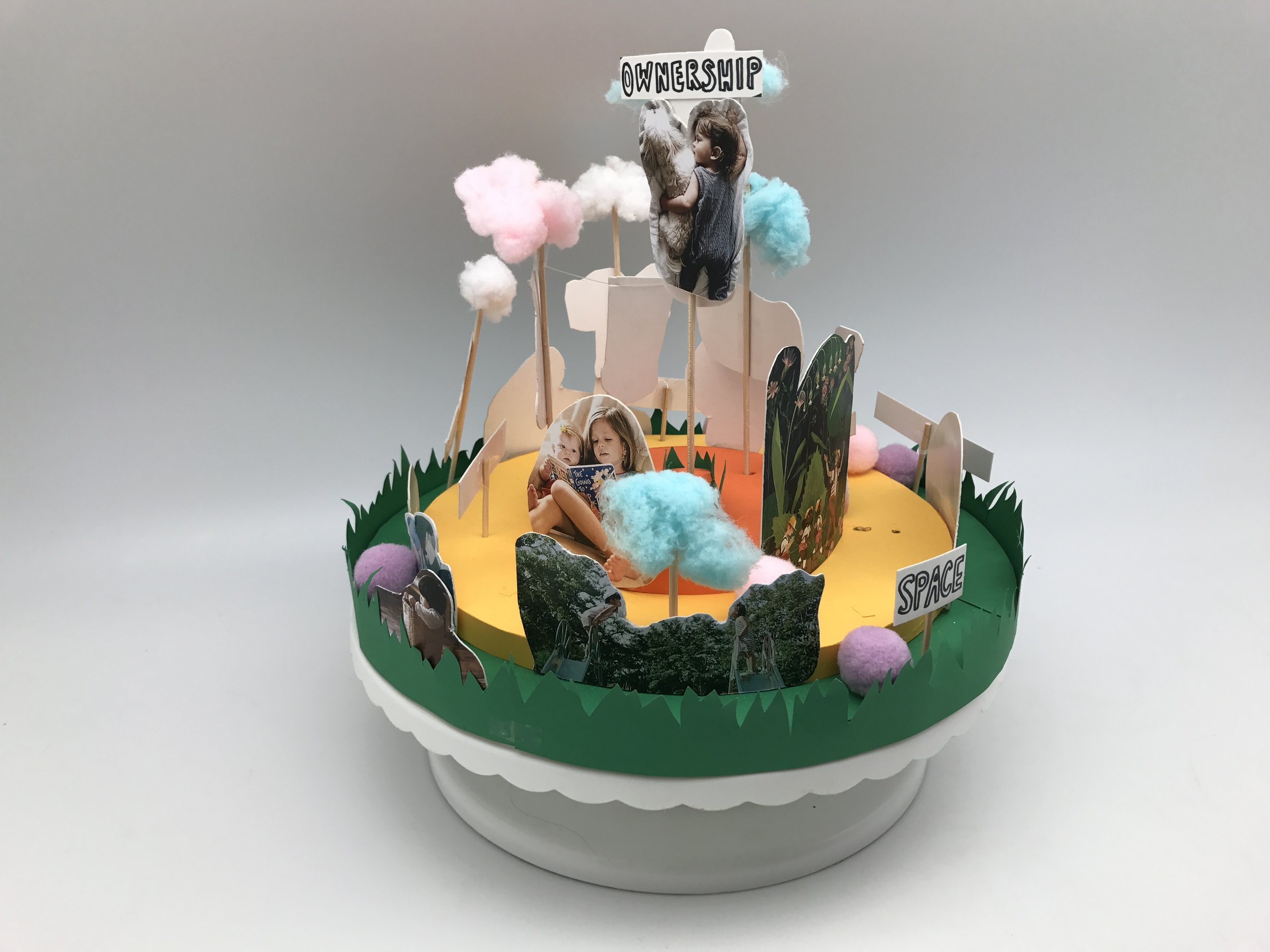To dive into the topic “vulnerable children’s everyday experiences’, the student teams created 3D mood boards at the start of the project. 3D mood boards are used to digest the topic in a very designerly manner: not just with brain and text, but with their hands, body, space and through the construction process.
Through the collaborative construction of the 3D mood board, students were able to exercise empathy, while learning to build rapport with the children-by recalling their own childhood memories and articulate their initial thoughts to team members.
Here we share the examples of 3D mood boards designed by NUS DID students in SDL’s past projects, in order to give inspiration to fellow designers and students.
CHILDHOOD 童年 tong nian
The theme of our moodboard is ‘childhood’. We recreated a void deck, an area that provided an open space for kids to play with their friends and buy snacks from mama shops with their pocket money. The inside of the “void deck” was filled with nostalgic toys and snacks, which contributed to our idyllic childhood.
In contrast, the kids from the centre, due to circ*mstances not of their fault, may have a very different experience from us. Nevertheless, we hope that through our design, they, like us, would have a childhood that they fondly look back at when they grow up.
Mood board by: Poh Yunru, Natalie Tan & Ng Zi Ning
NEVERLAND FORT
Remember building a fort in your bedroom, imagining dragons that we have defeated and playing pretend?
We did! So we chose to build a fort because we wanted to create an immersive experiential 3D moodboard that allows users to relive their childhood as they crawled through the fortress’s entrance, reminiscing the times when they too, build a tent/fort/house to play in and escape to. The fort, hence, represents childhood and the freedom and space to imagine. Even during the process of building, we wanted to remain faithful to the improvisation that a child will go through in the name of fun and imagination, so we used items found in studio and in our bedrooms. Besides toys and memories from our childhood, we also DIY-ed items like cup telephone, musical instruments and origami to convey the idea of resourcefulness. We want to remind the children to make use of their limitations even if they have lesser resources than others. The fort also reflects the state of Ang Mo Kio Family Service Centre BASIC, as it is a place that these children from vulnerable families may treat as an escapade. We also drew with crayons significant scenes from our site visit to the centre and paste it around the fort.
Mood board by: Mathilde Gaucher, Yong Zi Fong & Hansel Wong




















Fort Experience




















THROUGH THE LOOKING HOLE
This moodboard is inspired by our fond memories of childhood, and the our interpretation of the values which FSC wants to nurture in Punggol Place 206A. These values include 'a sense of ownership', 'imagination', 'space (for play)' and 'aspirations', and are represented through a series of photographs and illustrations. The moodboard takes the shape of a carousel, with multiple tiers sculpting out a dynamic pictorial landscape of childhood.
We chose to cover the carousel with a facade of the HDB void deck setting with cut-out holes for the viewer to peer through. This was inspired from a zoetrope, and the sense of wonder and discovery that the viewer feels as he peers through the slits of the exterior facade. We feel that this tone of discovery, wonder, and dynamism has been central our childhood, and perhaps we could use it to ground our design interventions for 206A.
Mood board by: Ng Tse Pei, Maggie Seah & Felicia Koh

ThroughTheLookingHole

360 view
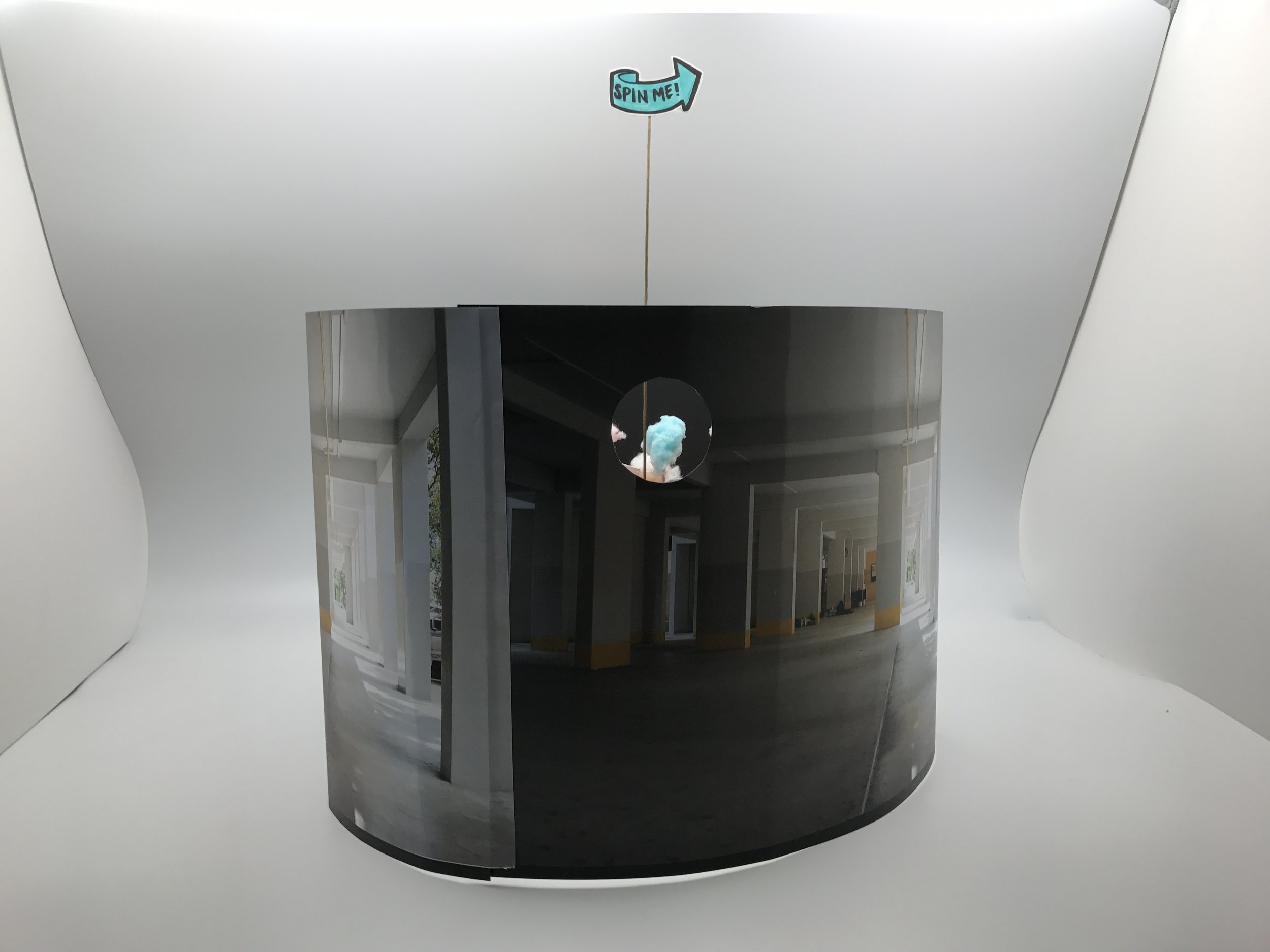


INNERSELF
The white facade, that masked the untold stories, portrays the pure image of a child. Each half represents the extreme good or bad conditions that a child might experience, from having to play with their favourite game to not be able to have a complete meal. The head, ear, body and feet constitute of a child mindset and what a child would longed for, hope for, feel for, hear, touch and places they hope to go respectively. A new story unfolds as the items in the respective body parts of the child tell its story.
Mood board by: Milly Tan, Han Yuen Wei & Kelvin Siew



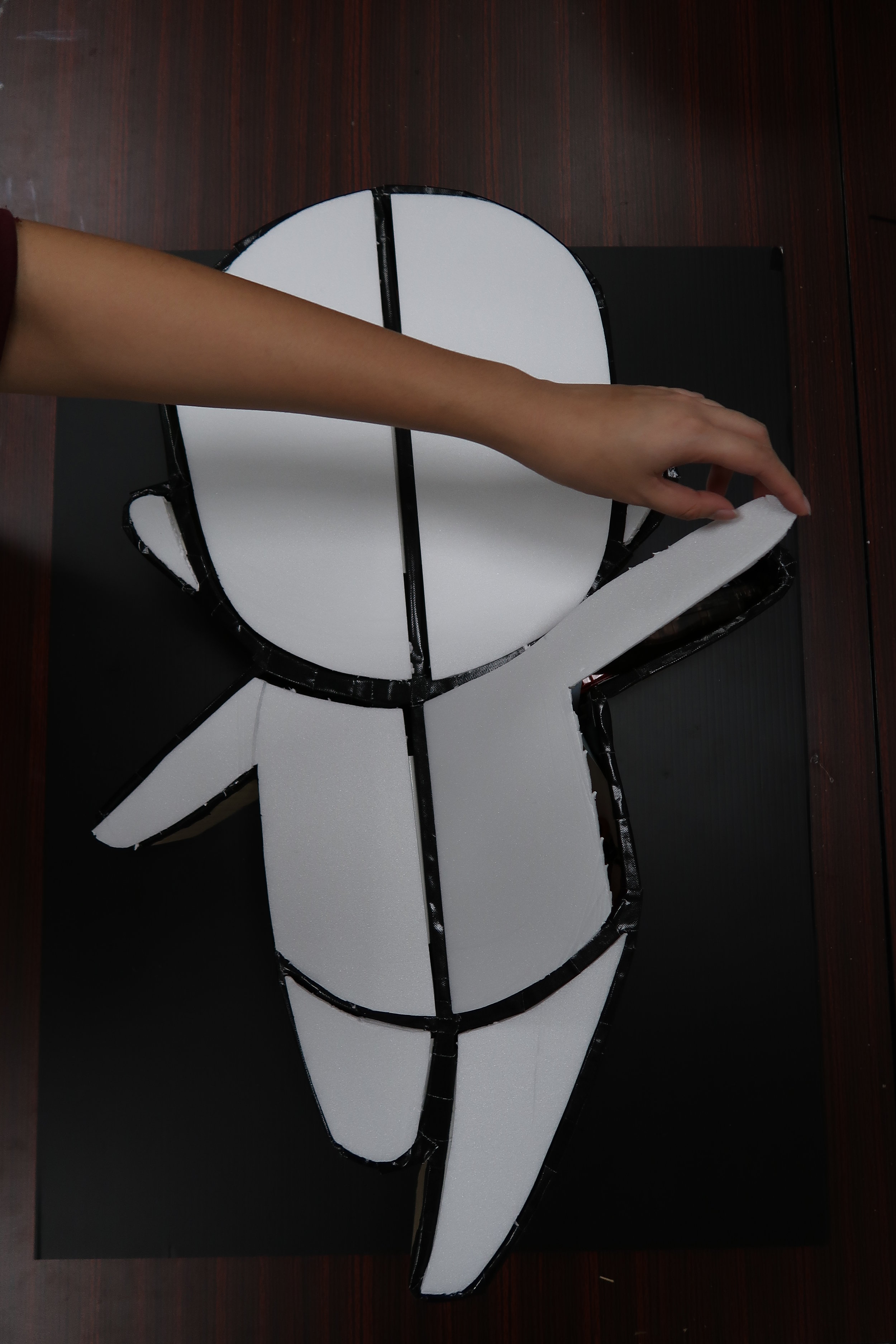
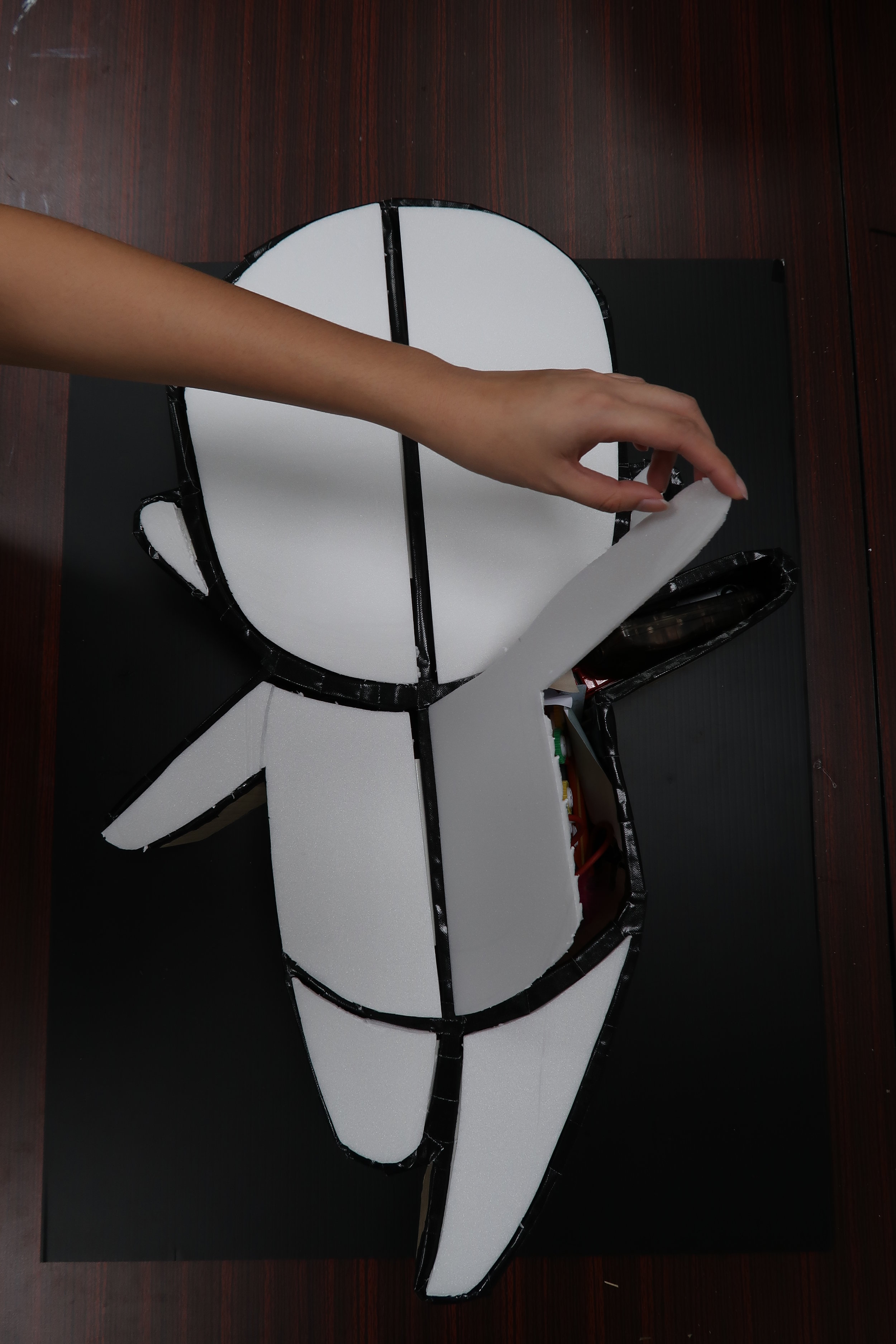
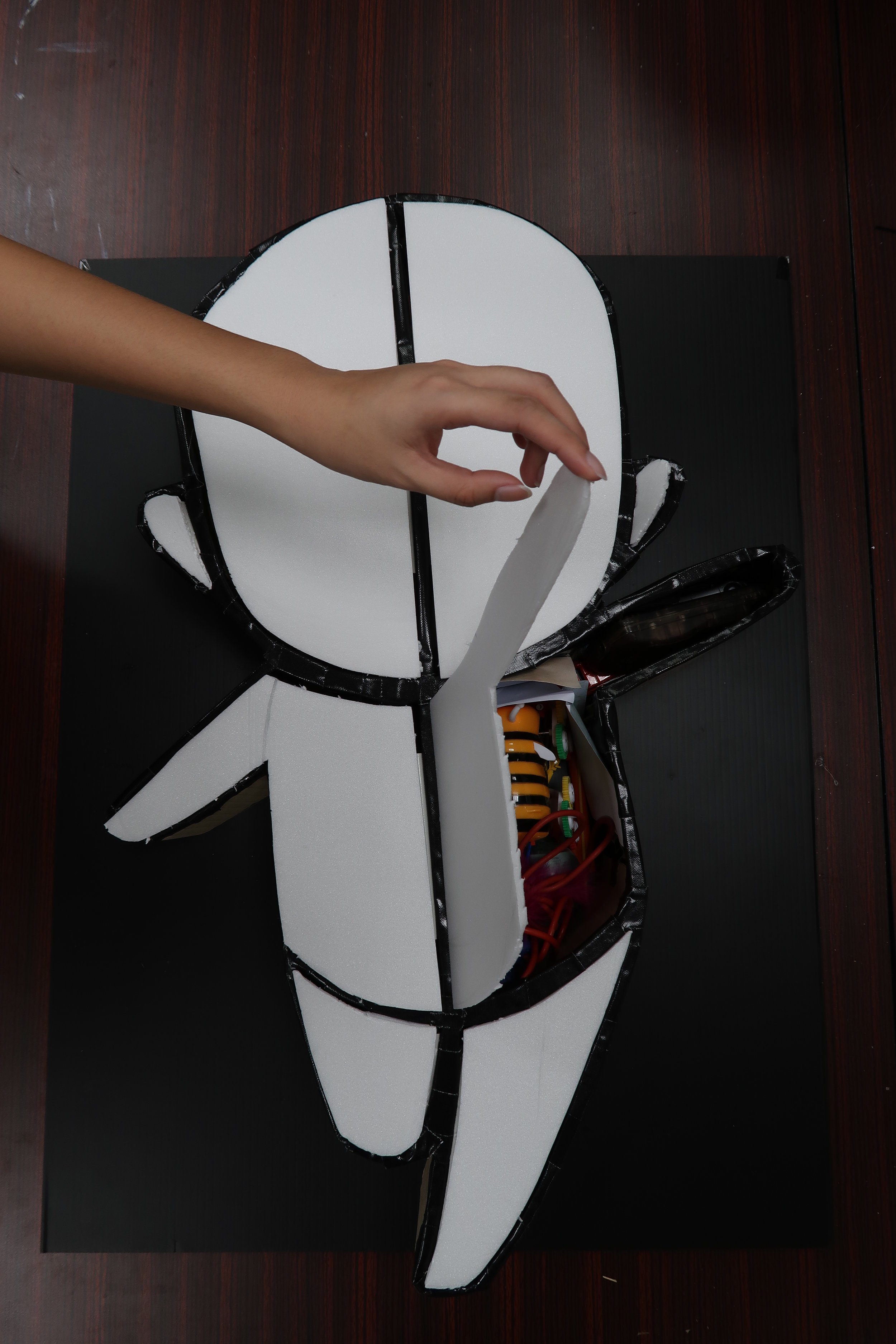
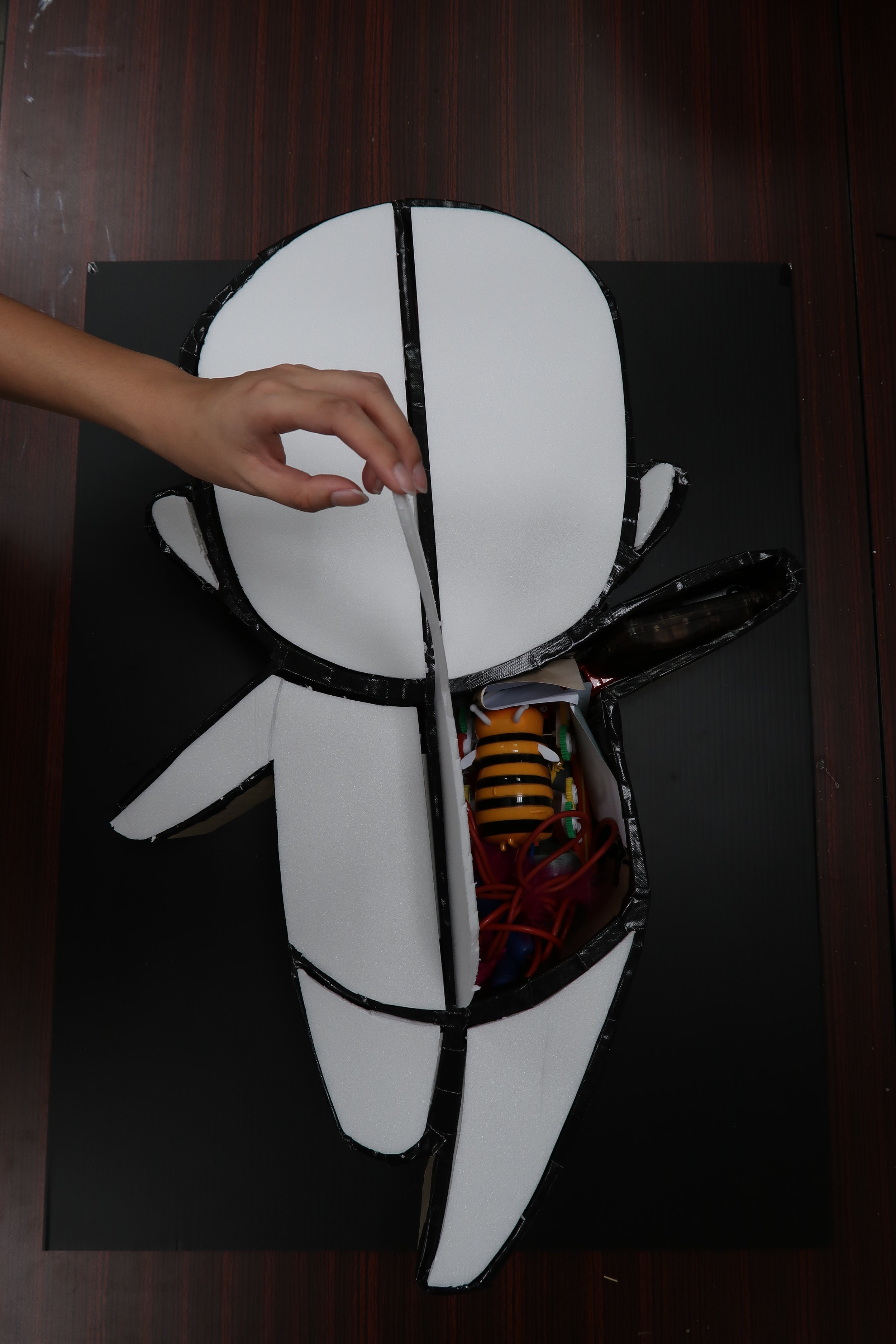

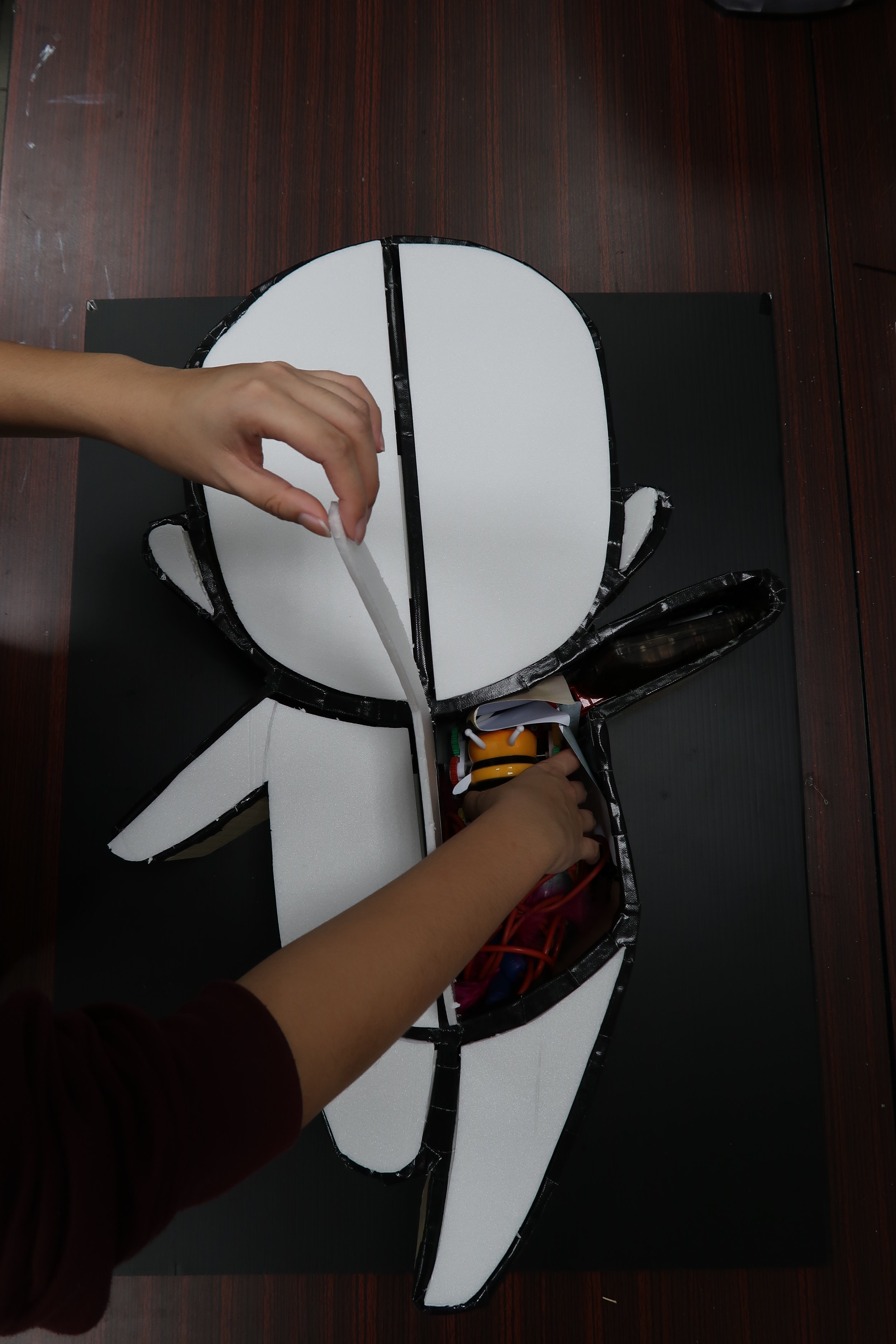
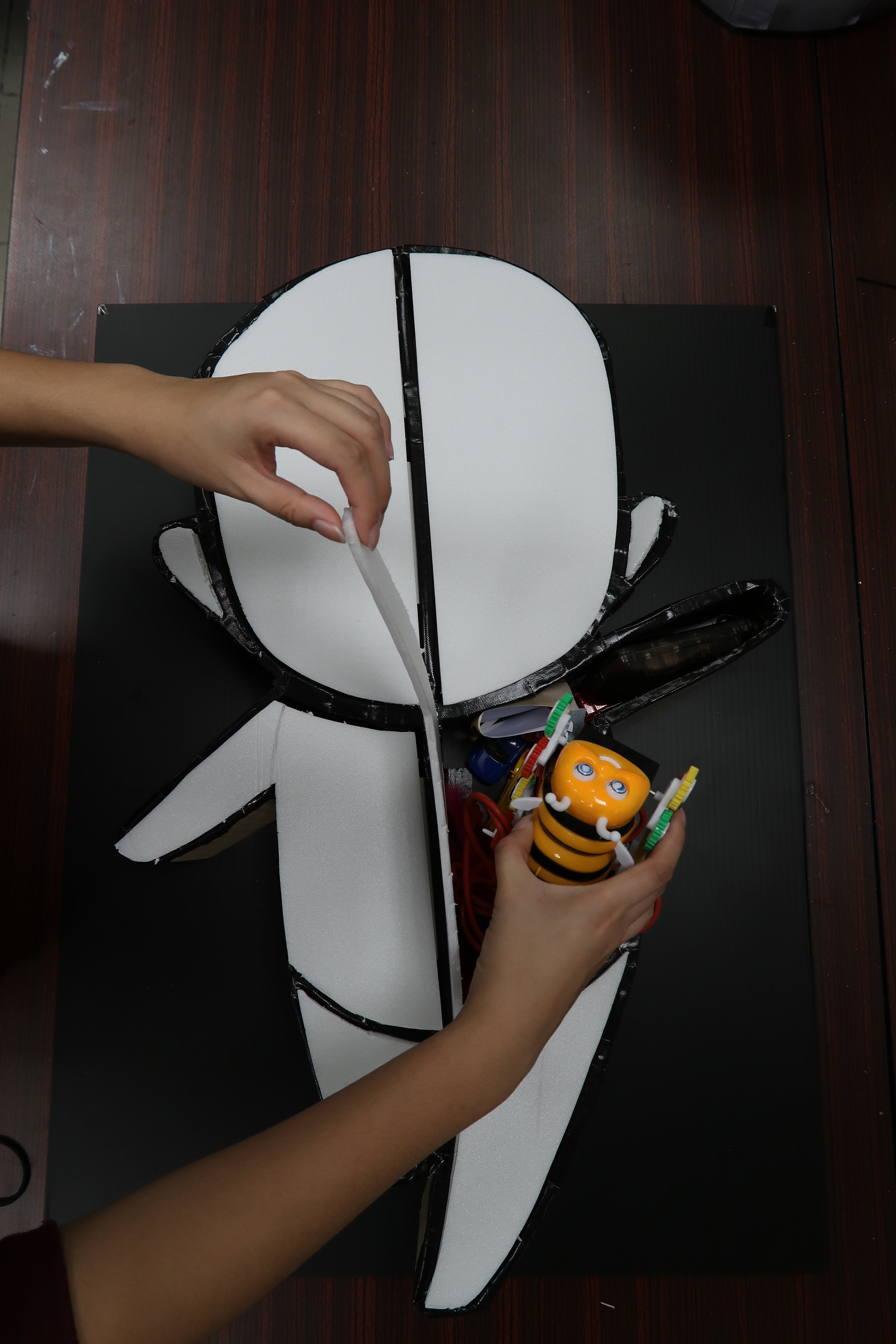
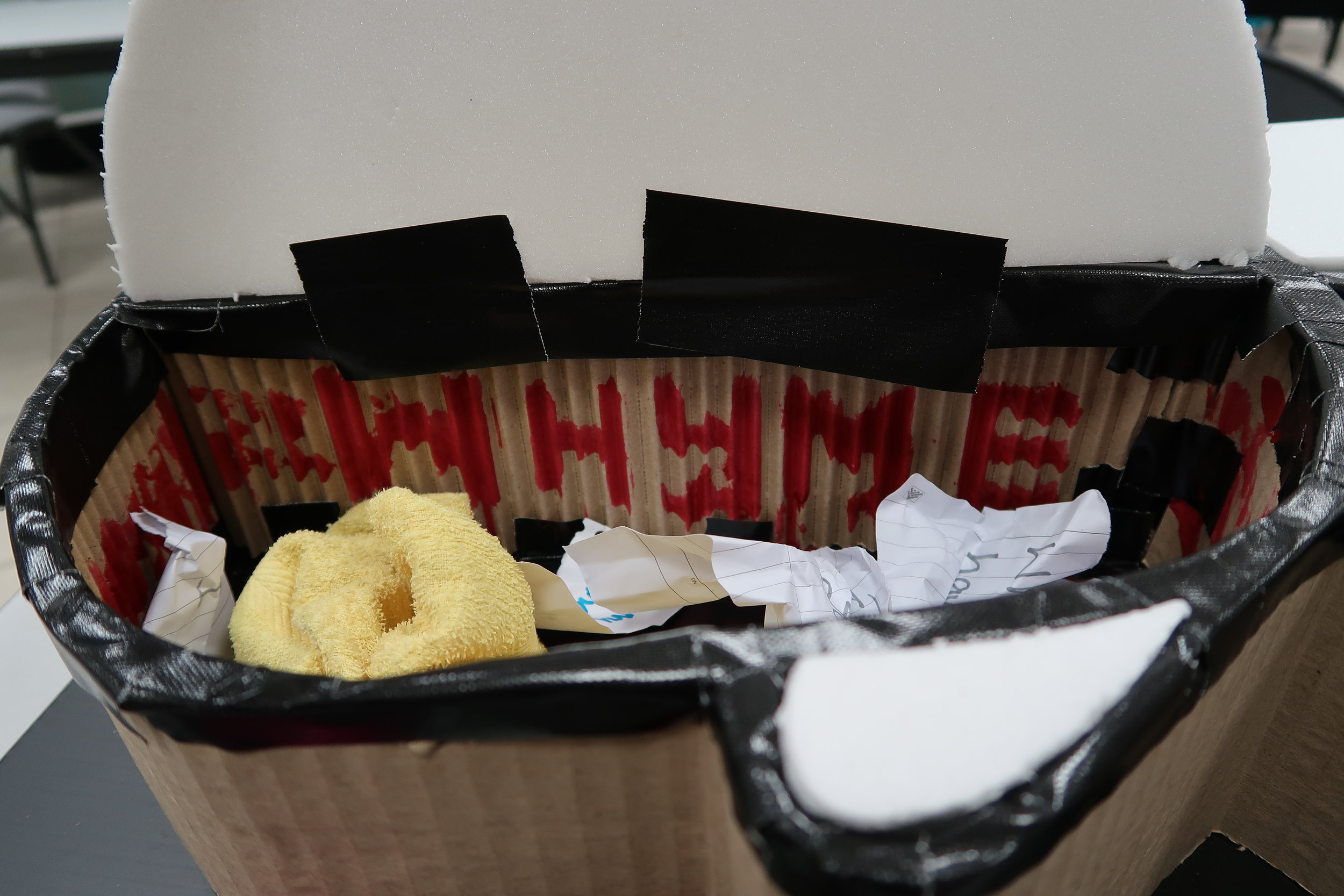
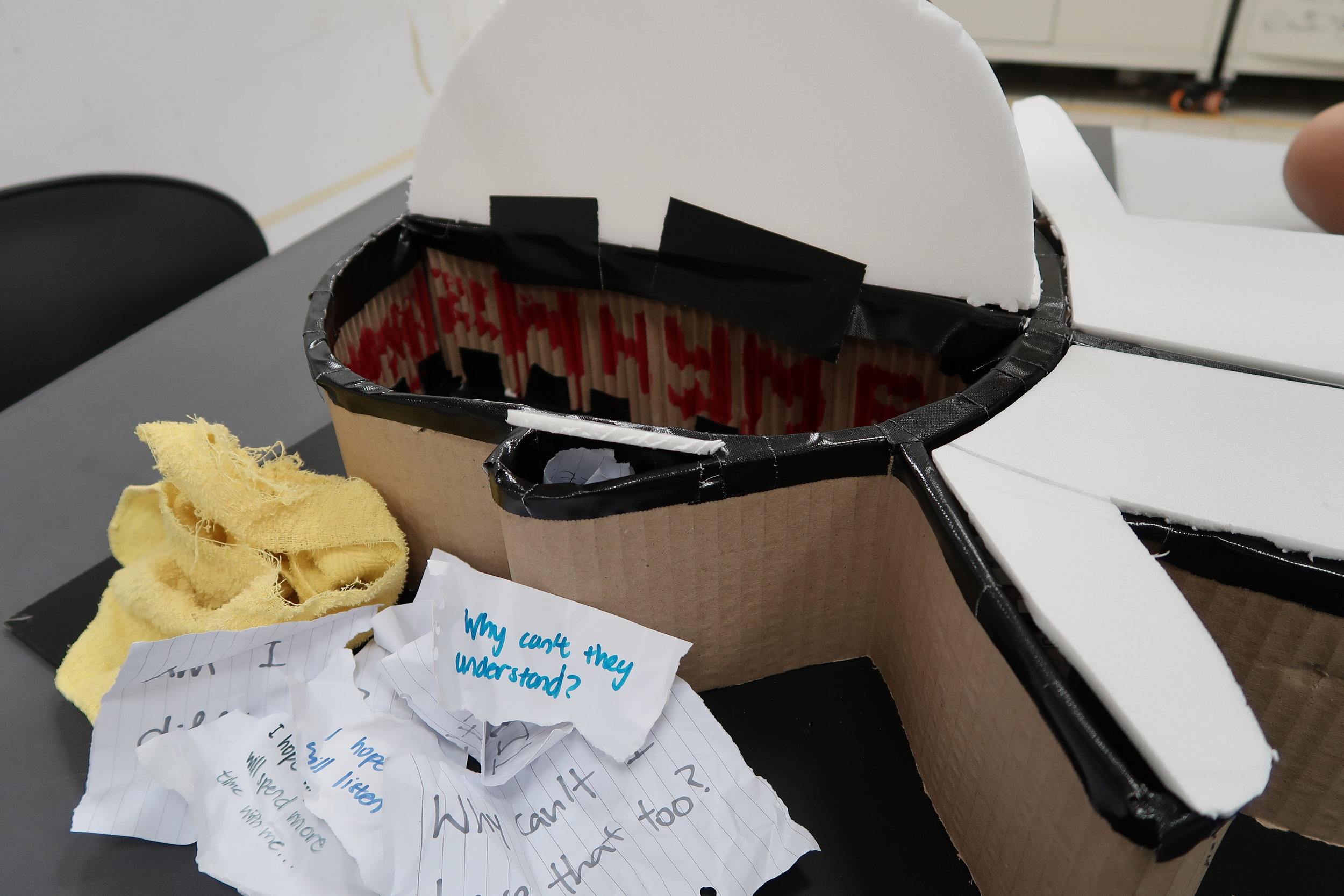
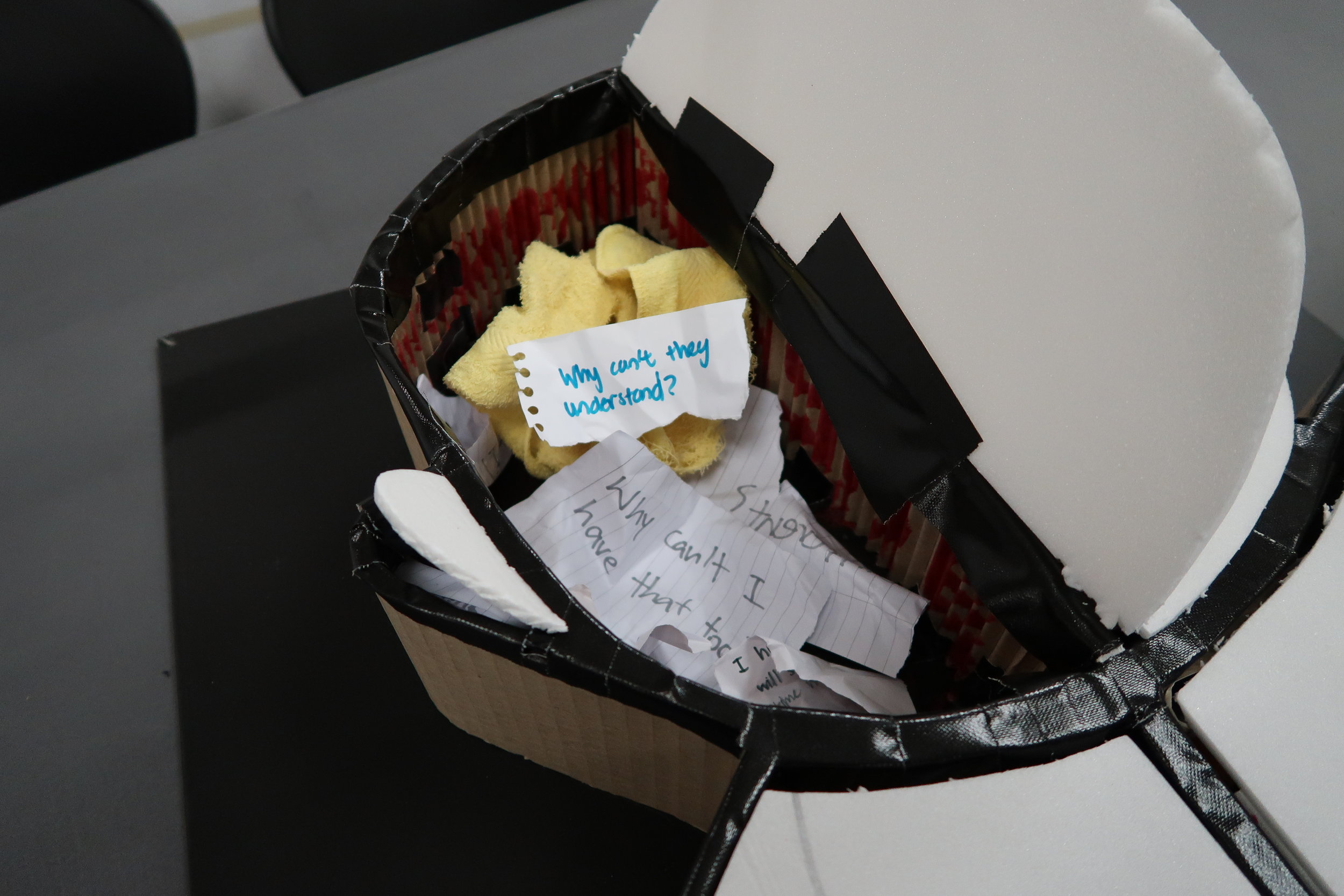


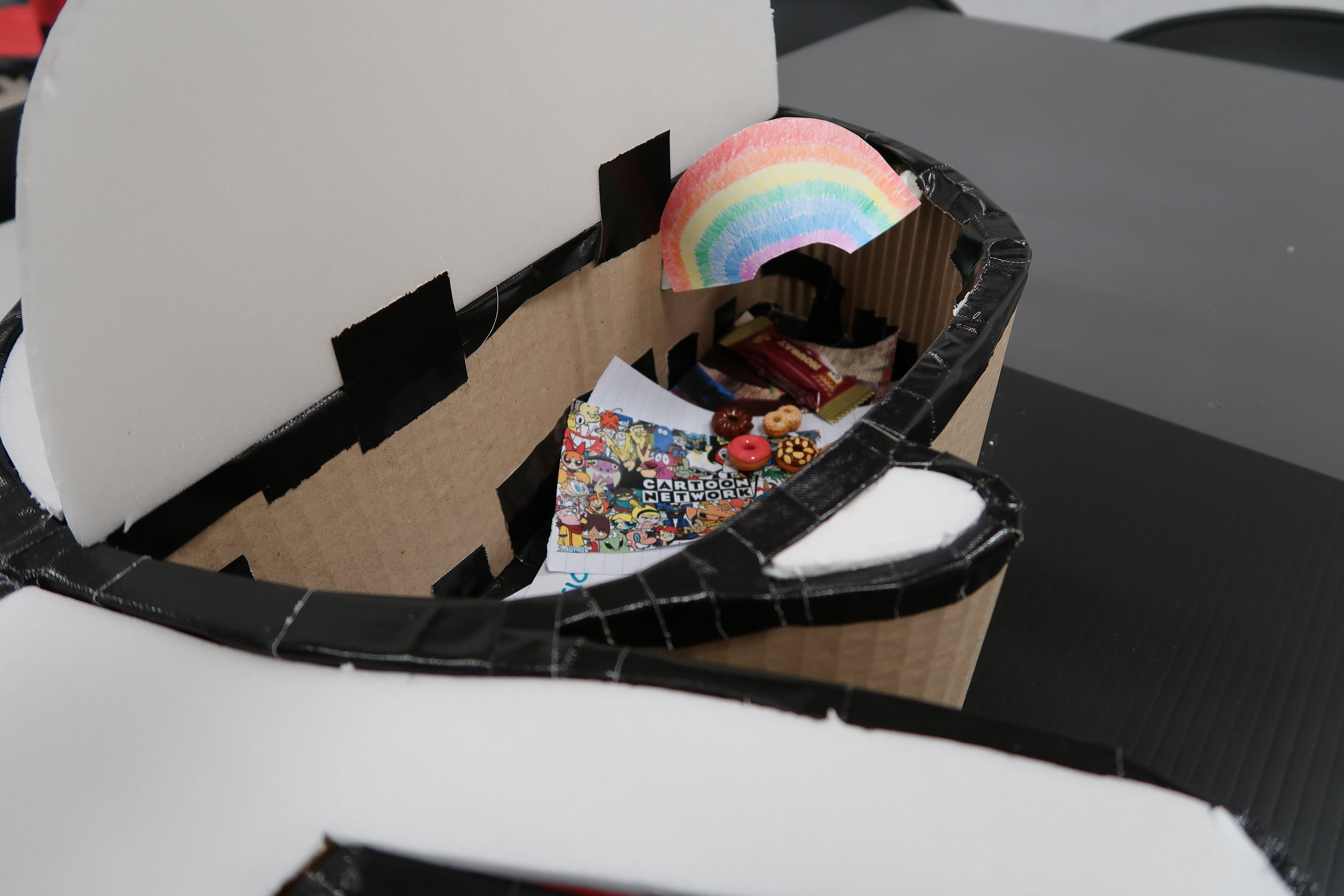
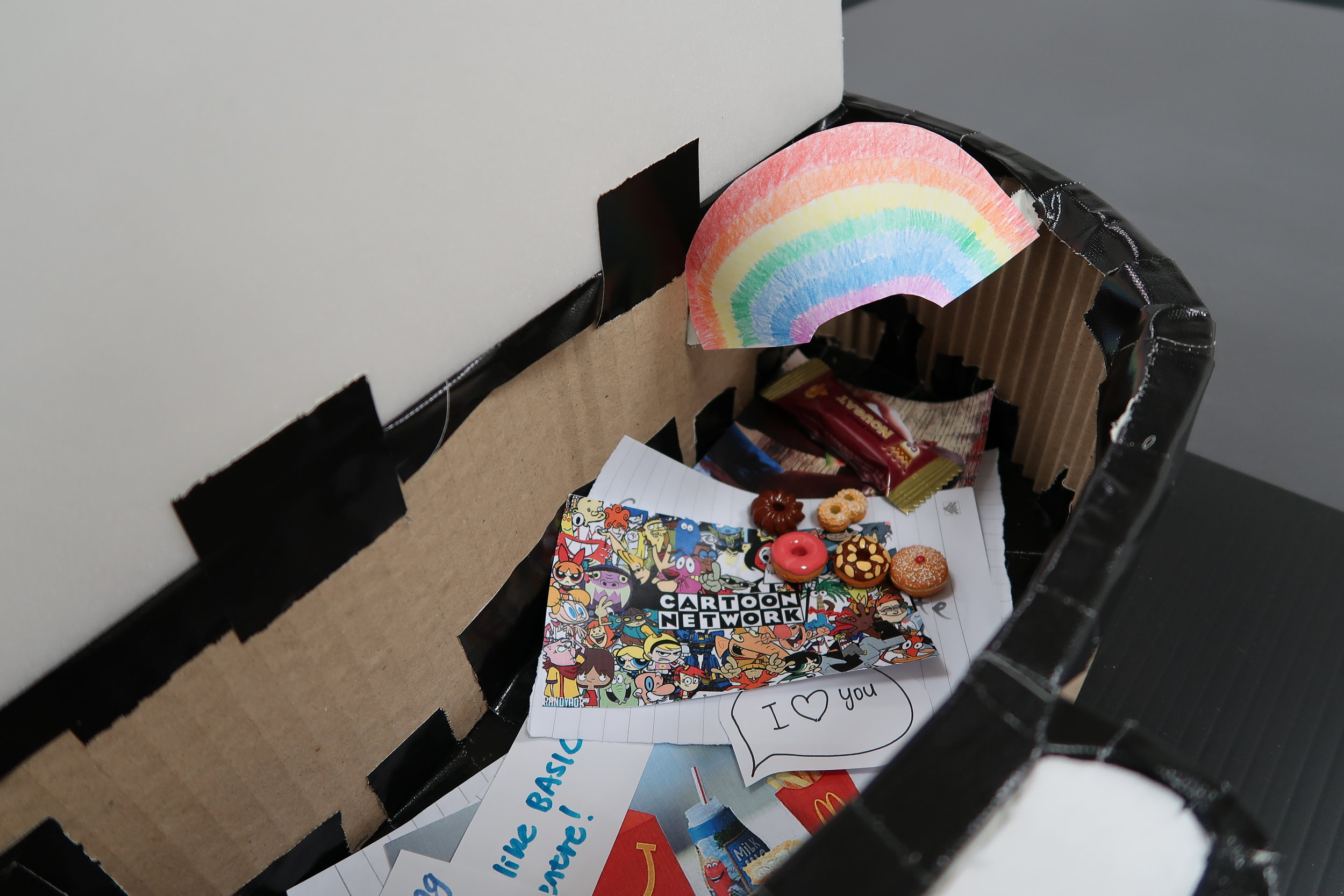
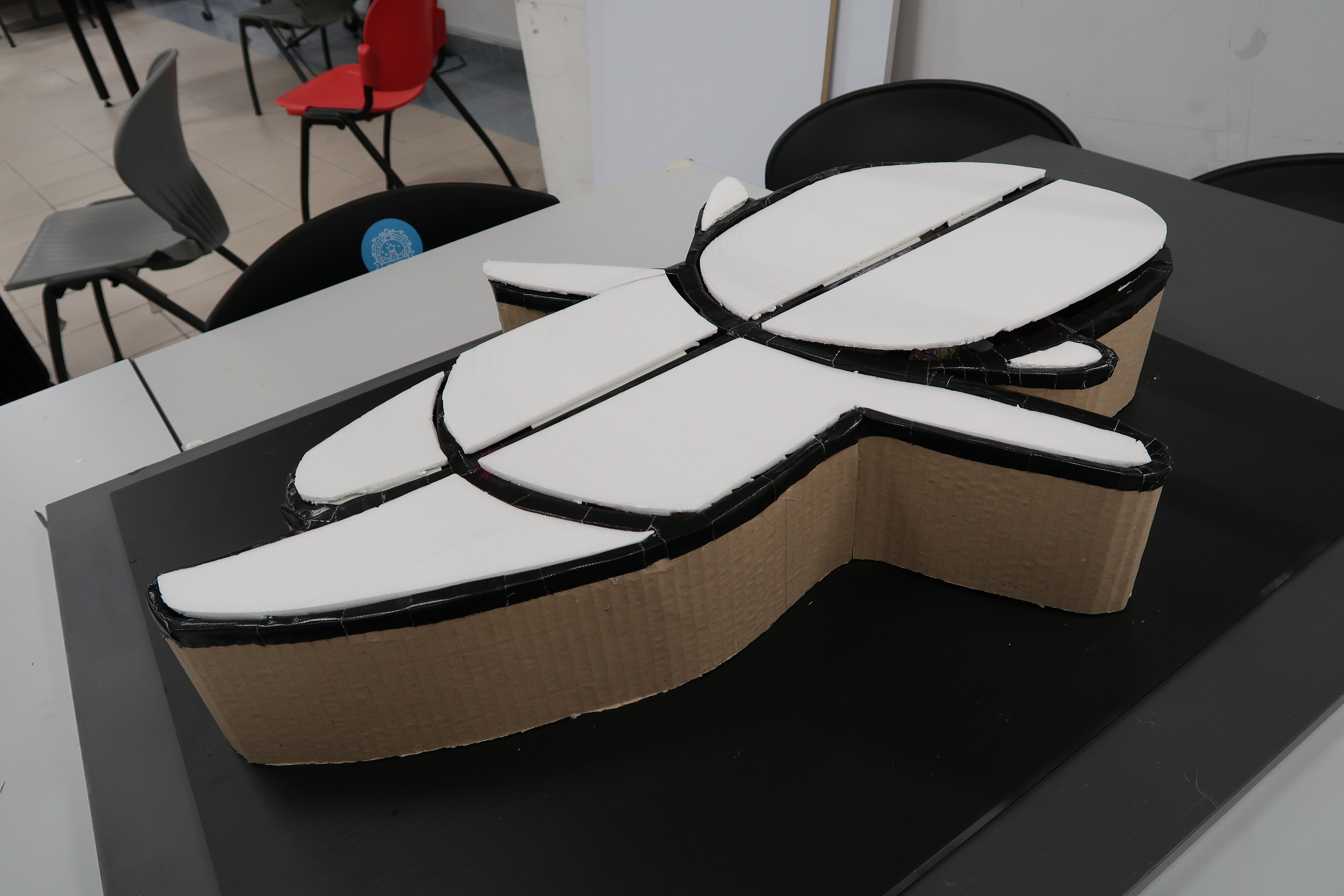
THE LETTER BOX
This 'Letter Box' mood board aims to visualize the environment of children from vulnerable families by categorizing the various aspects of their childhood.
C: Children's Childhood - Imagery of children's favorites (e.g. toys, daily activities, hobbies), books as well as childhood snacks.
F: Facts - A brief introduction to the project, supported by a visit to the rental flat and information from desk research regarding the scope of the project.
A: Assumptions - That the team wished to prove throughout the project.
Mood board by: Yang XinHui, Jacelyn Lau, Nghiem Si Phuoc & Melissa Shi
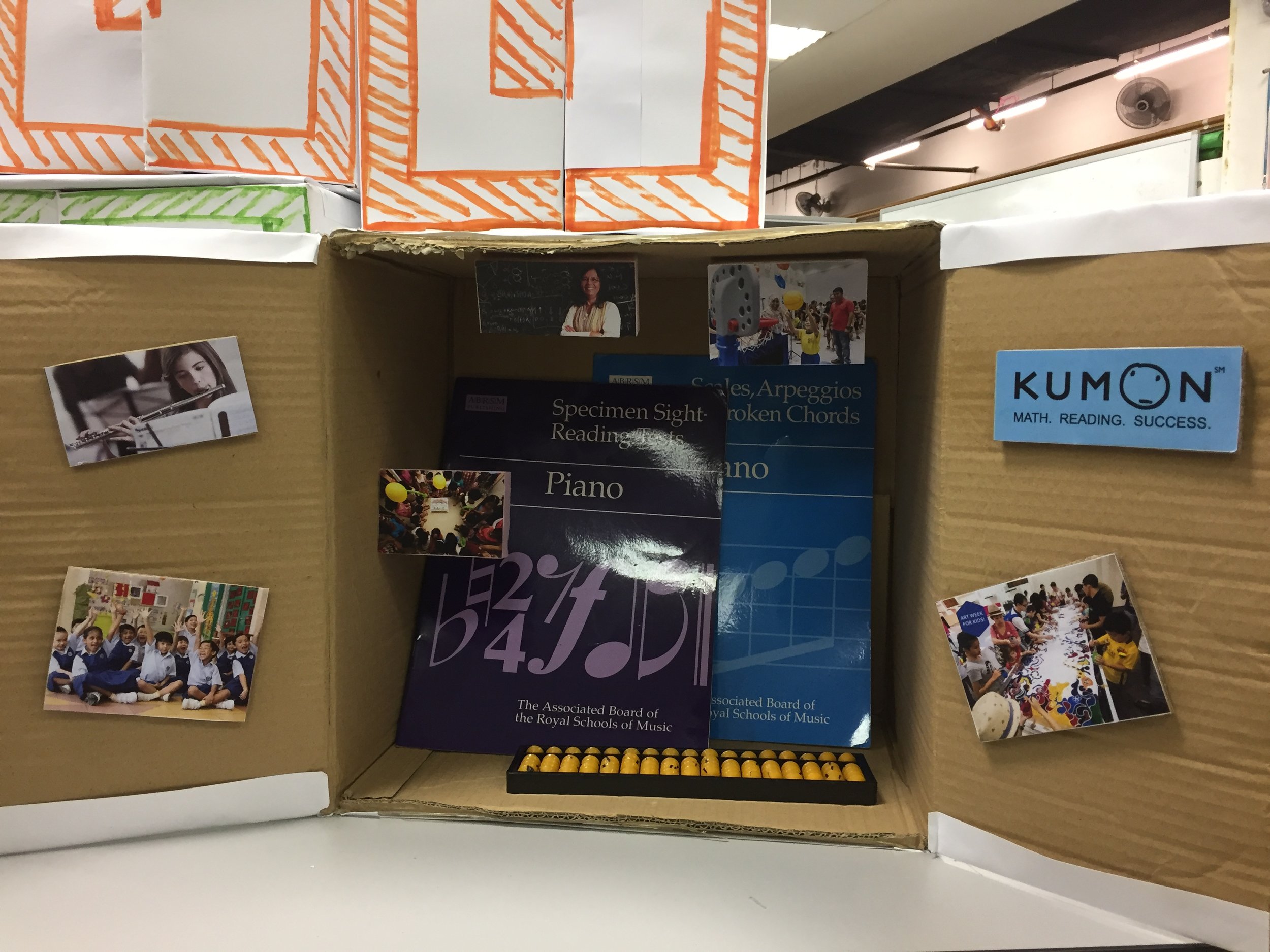


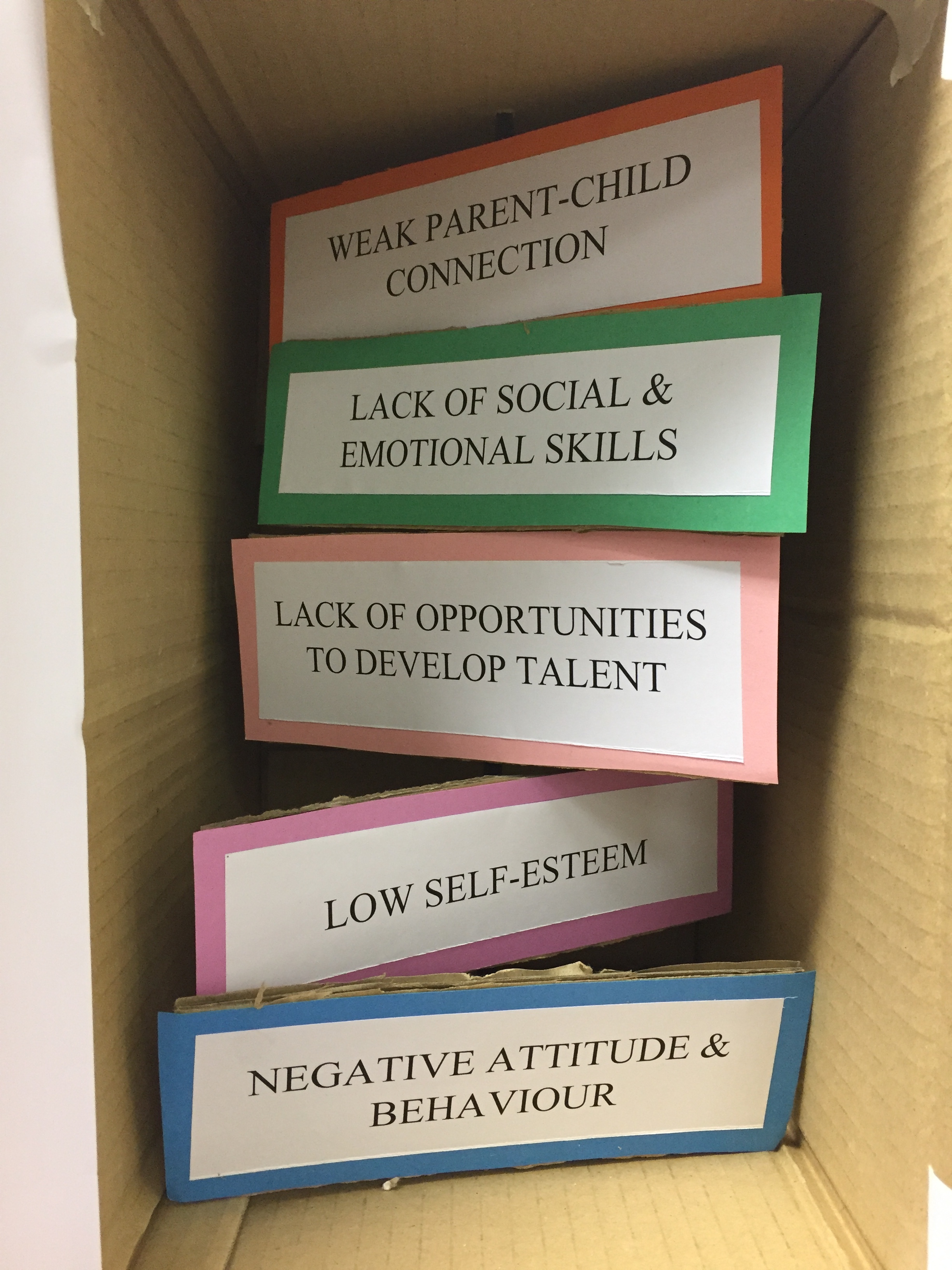
BEHIND CLOSED DOORS + INSIDE OUT
Behind Closed Doors
Through this, we hope to better understand what are the needs of children and the resources available. Behind each door, we have identified some of the major problems faced by the children of vulnerable families in Singapore society. On the doors are the various solutions and initiatives by government and non-government organisations. With this knowledge, we gain insights on design opportunities.
Inside Out
“Adults are just outdated children.” - Dr Seuss
Empathy is crucial in design. To design for children, the best way for us to empathise is to reminisce and relive our childhood days, to understand what may or may not work for the children. This box is inspired by the cartoon, “Inside Out”. We associated objects with different emotions, and segmented each emotion into a “room”.
Mood board by: Grace Ng, Chan Shi Ming & Sheryl Teng


























THE PYRAMID
The 3D moodboard takes the form of a pyramid, which was inspired by Maslow's Hierarchy of Needs, a motivational theory in psychology that describes the five basic human motivations and acts as a reminder to guide our research in uncovering the essential needs of the stakeholders involved. The sides of the pyramid represents the 3 stakeholders involved, namely AMKFSC, the children and the parents from vulnerable families. On the outside, pictures are displayed to demonstrate society's perception of the stakeholders with a variation in vibrancy and context to describe the general sentiment relating to the individual stakeholder. As the pyramid unfolds, the individual sides contain keywords from our research that are specific to the stakeholders and their situations. Lastly, an apple is positioned in the core of the pyramid to symbolise the project focus of developing the children's potential for personal growth.
Moodboard by: Magdalene Huang, Winky Chan & Jonathan Tsang










